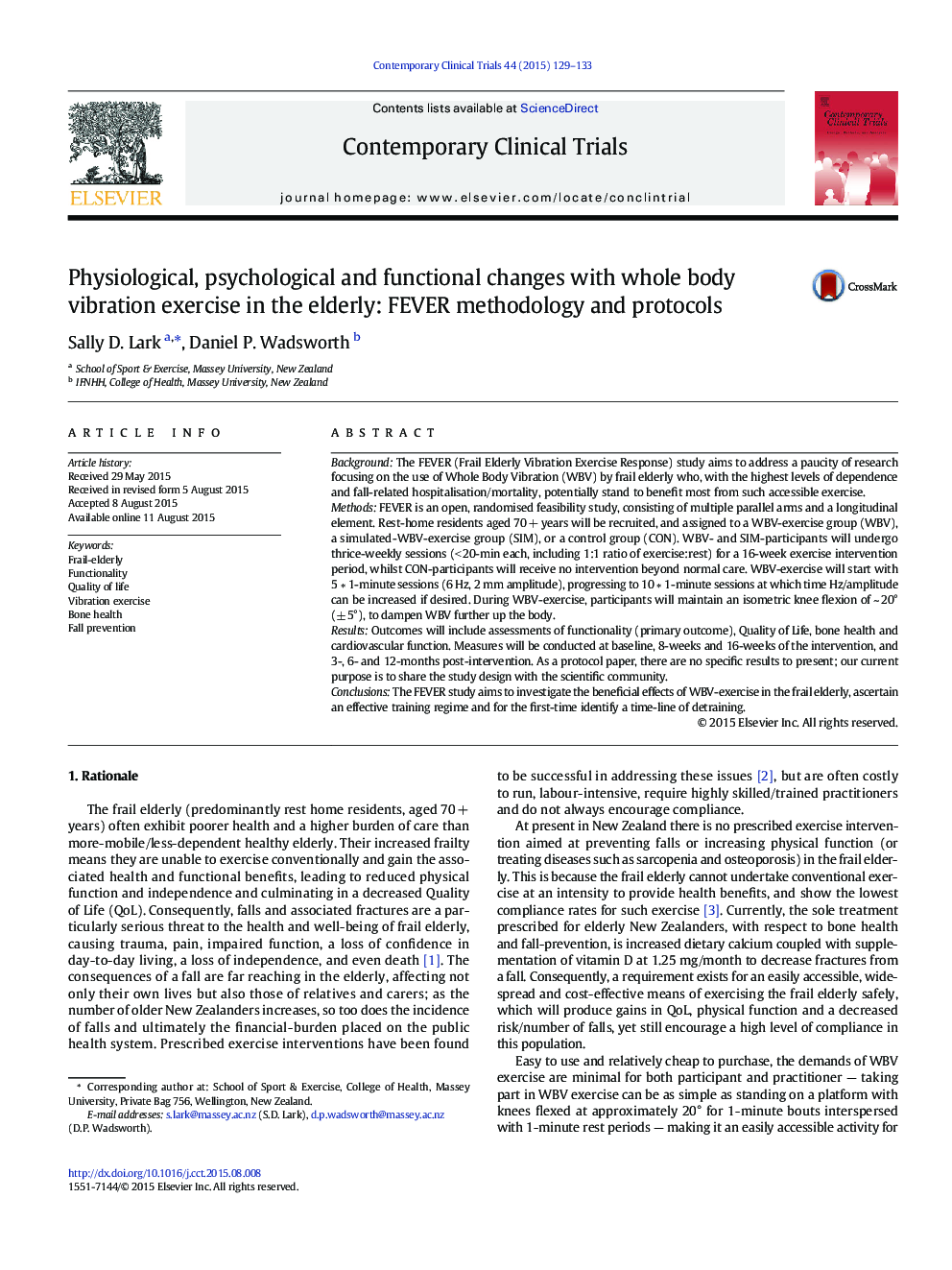| Article ID | Journal | Published Year | Pages | File Type |
|---|---|---|---|---|
| 6150915 | Contemporary Clinical Trials | 2015 | 5 Pages |
BackgroundThe FEVER (Frail Elderly Vibration Exercise Response) study aims to address a paucity of research focusing on the use of Whole Body Vibration (WBV) by frail elderly who, with the highest levels of dependence and fall-related hospitalisation/mortality, potentially stand to benefit most from such accessible exercise.MethodsFEVER is an open, randomised feasibility study, consisting of multiple parallel arms and a longitudinal element. Rest-home residents aged 70 + years will be recruited, and assigned to a WBV-exercise group (WBV), a simulated-WBV-exercise group (SIM), or a control group (CON). WBV- and SIM-participants will undergo thrice-weekly sessions (< 20-min each, including 1:1 ratio of exercise:rest) for a 16-week exercise intervention period, whilst CON-participants will receive no intervention beyond normal care. WBV-exercise will start with 5 â 1-minute sessions (6 Hz, 2 mm amplitude), progressing to 10 â 1-minute sessions at which time Hz/amplitude can be increased if desired. During WBV-exercise, participants will maintain an isometric knee flexion of ~ 20° (± 5°), to dampen WBV further up the body.ResultsOutcomes will include assessments of functionality (primary outcome), Quality of Life, bone health and cardiovascular function. Measures will be conducted at baseline, 8-weeks and 16-weeks of the intervention, and 3-, 6- and 12-months post-intervention. As a protocol paper, there are no specific results to present; our current purpose is to share the study design with the scientific community.ConclusionsThe FEVER study aims to investigate the beneficial effects of WBV-exercise in the frail elderly, ascertain an effective training regime and for the first-time identify a time-line of detraining.
